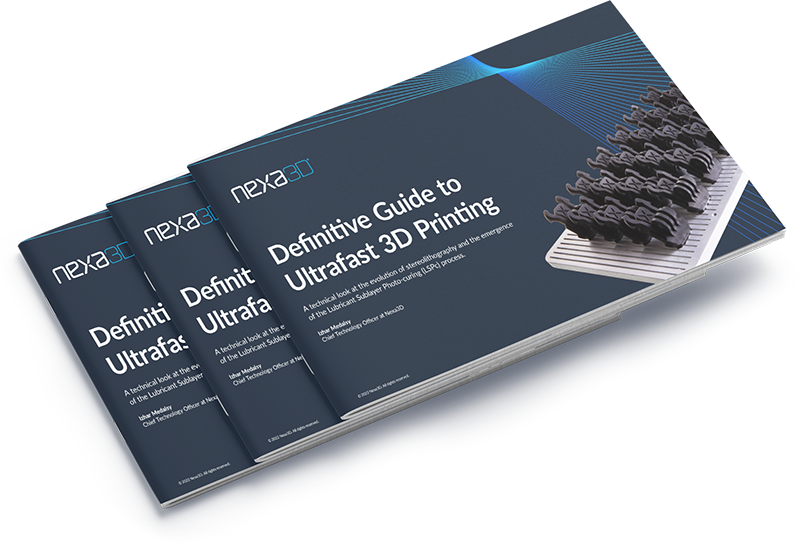Technical Review of LSPc® | Next Gen mSLA
Learn more about Nexa3D’s patented 3D printing process, the Lubricant Sublayer Photo-curing (LSPc®) in this free technical guide

Introduction
The nearly four-decades-old story behind Charles “Chuck” Hull’s industry-changing invention has become the story of a 3D printing legend. An engineer frustrated with the long lead times needed for plastic prototype parts, Hull looked to his work with UV light to harden resin-based tabletop coatings as a way to solve the problem, and after months of late night tinkering, he was successful. In 1986, Hull filed for a patent on his “Apparatus for production of three-dimensional objects by stereolithography.” His application described a machine that successively “prints” thin layers of a UV-curable material, one on top of the other, using a programmed movable beam of laser light shining on the surface of the liquid. He went on to found 3D Systems shortly thereafter, and today, there’s little argument that the company’s commercialization of his stereolithography apparatus (SLA) altered the course of manufacturing. We take a closer look at the evolution of the stereolithography process that ultimately led to the invention of masked stereolithography and then the Lubricant Sublayer Photo-curing technology, a 3D printing process that is orders of magnitude faster than the original stereolithography process.
This guide focuses on:
- Throughput limitations of traditional SLA
- Lubricant Sublayer Photo-curing (LSPc) technical overview
- How to achieve up to 20x productivity gains

